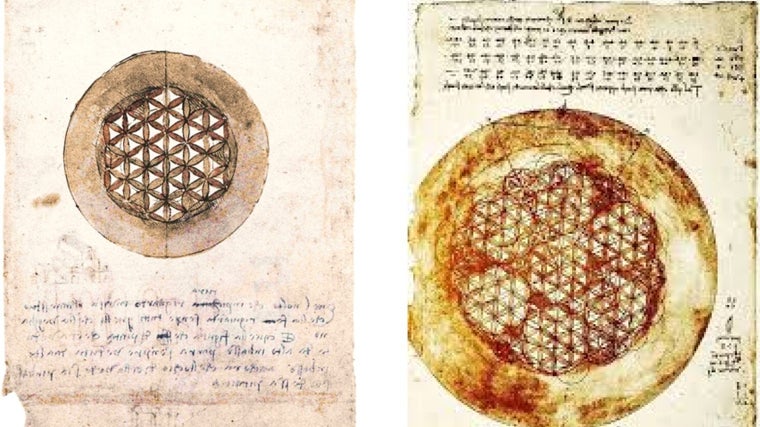A new hypothesis aims to solve a mystery "hidden in plain sight" about Leonardo da Vinci's 'Vitruvian Man'.
Besides the famous Mona Lisa, one of Leonardo da Vinci's most iconic works is the Vitruvian Man. This drawing, created around 1490 , shows a nude male figure with arms and legs extended in two superimposed positions, inscribed within a circle and a square. Although its symbolism as a representation of the ideal proportions of the human body has been widely documented, a mystery remains that has fueled numerous hypotheses: how did Leonardo manage to accurately fit the human figure into both geometric shapes?
In a recent study published in the Journal of Mathematics and the Arts, British dentist Rory Mac Sweeney has another hypothesis that aims to solve this "hidden in plain sight" enigma. According to him, Leonardo used an advanced geometric system whose key has gone unnoticed for more than five centuries. If his hypothesis is correct, it would demonstrate— once again —that the Renaissance genius was ahead of his time, applying concepts that science would only formalize centuries later.
"The Vitruvian Man is a testament to Leonardo's insight that human proportions reflect deeper mathematical principles governing efficient spatial organization ," Sweeney states in his analysis.
The drawing's original inspiration comes from the writings of Roman architect Marcus Vitruvius , who argued that the human body has harmonious proportions, like those of a well-designed temple. He proposed that a human figure could fit perfectly within a circle and a square, though he didn't offer a precise mathematical framework for that relationship. Leonardo did achieve this integration, but, as the specialized media phys.org points out, he never clearly explained how he did it.
Sweeney's analysis focuses on the equilateral triangle drawn between the figure's open legs. According to him, this triangle is not accidental, but key to deciphering the geometric system hidden in the drawing.
Sweeney relates this triangle to an anatomical figure known as Bonwill's triangle, described in 1864. This is an imaginary equilateral triangle in dental anatomy that connects the two points where the lower jaw articulates with the skull and the midpoint between the lower central incisors . This pattern regulates optimal jaw function.
According to Sweeney, Leonardo used this triangle to relate the body's static position to its dynamic capacity. In his interpretation: "The square encloses a static, cruciform posture—arms horizontal and legs together—while the circle encapsulates a dynamic position, with arms raised and legs apart, forming the equilateral triangle ."
For this Briton, Leonardo's construction demonstrates the same tetrahedral principles present in craniofacial architecture. " The equilateral triangle (green), to which Leonardo explicitly referred between the figure's legs, when replicated six times around the navel, creates the hexagonal pattern (yellow) that generates the measured ratio of approximately 1.64 between the side of the square and the radius of the circle." This value is close to the tetrahedral ratio 1.633 , a mathematical constant that appears in efficient natural structures. "This geometric relationship could represent Leonardo's intuitive recognition," explains Sweeney.
Sweeney points out that for decades, many researchers assumed that Leonardo had used the famous golden ratio (φ ≈ 1.618) in his drawing , in part because of his collaboration with mathematician Luca Pacioli on 'The Divine Proportion'. "However, more recent studies—such as those by mathematician Fernando Murtinho—show that applying this ratio generates an error of more than 2% with respect to the actual measurements of the drawing," he says.
The British scientist points out that the value Leonardo used is closer to the tetrahedral constant. In fact, he argues that in the circular studies of the Codex Atlanticus, Leonardo was already exploring hexagonal patterns that give rise to triangular tessellations, a clear precursor to this logic of spatial organization.
 Leonardo's studies on hexagonal circle patterns from the 'Codex Atlanticus'
DC
Leonardo's studies on hexagonal circle patterns from the 'Codex Atlanticus'
DC
"The coincidence between the proportions calculated by Leonardo and natural geometric constants suggests that human anatomy has evolved according to universal principles of spatial organization, present from atoms to human morphology." The British artist's analysis indicates that the 'Vitruvian Man' not only represents an aesthetic ideal, but also anticipates the modern understanding of optimal biological architecture .
ABC.es


